- Home » Expat Contests » Writing Contest March 2013 - Ten Top Châteaux in the Loire Valley
Expat Blog Awards 2013 - Contest concluded. Read all 171 Expat Top Lists or see the Prize/Award Winners
Ten Top Châteaux in the Loire Valley
By: Rosemary Kneipp
There are so many wonderful places to visit in the Loire Valley that newcomers to the region often need guidance. It’s pointless saying “Chenonceau is my favourite. You should go there” or “Forget about Chambord, there’s nothing to see”. Each of the châteaux is different and visitors will be attracted to one or the other according to their own individual tastes. My aim here is to give an idea of what each has to offer so you can make your own choice.I only intend to talk about the “pleasure castles” here, and not fortified castles such as Chinon and Loches, religious edifices such as Fontevraud l’Abbaye, or mansions such as Clos Lucé. I’ll start with the four “Cs”: Chenonceau, Chambord, Cheverny, Chaumont, followed by the royal castles of Amboise and Blois, all of which are located in the same general area, then Azay le Rideau, Ussé, and Villandry, which form another geographical group, with Valençay off on its own to the south.
- Chambord
The rooftops of Chambord, along with its famous double staircase, are its best known features and must be one of the most stunning examples of architecture I’ve ever seen. François I, the star of the French Renaissance, was only 25 when he commissioned the château in 1519. Unfortunately, despite the presence of 2000 workmen, it wasn’t completed in his lifetime and he only stayed there for 72 days out of his 32 years on the throne! He used it as a hunting lodge of course and it was not furnished – he used to travel around with everything and everyone he could possibly need. But his son, Henri II, as well as Louis XIV, who also loved hunting, turned it into the château we know today.
There is a series of furnished rooms in one wing that can be visited as well. In the mid-nineteenth century, the Count of Chambord decided to open the château to the public and furnish some of the apartments with his own private collection, mainly consisting of royal portraits and other rather disparate pieces of furniture. On 1st May every year, there is a wonderful antique and second-hand fair in the extensive castle grounds that is certainly worth attending. There are several restaurants and souvenir shops in view of the château. - Chaumont
Chaumont stands in a prize position overlooking the Loire and is best seen from the other side of the river. From April to October, it hosts a wonderful garden festival with a different theme each year. The château as it stands today was rebuilt from 1468 to 1511. It was bought by Catherine de Medicis, wife of Henri II (son of François I) in 1550. On his death, she forced her husband’s paramour, Diane de Poitiers, to swap Chenonceau, a gift from Henri, for Chaumont.
The château was later restored by Prince de Broglie between 1875 and 1900, including the beautifully furnished state rooms and luxury stables with their exercise ring. The top floor of the château, currently in a somewhat derelict state, can also be visited, as well as the basement kitchens. Between the château, the stables, the grounds and the garden exhibition, you can easily spend the day on the Domain, which has no fewer than four different restaurants. - Chenonceau
Built from 1513 to 1521 and celebrating 500 years of existence this year, Chenonceau spans the Cher River. It’s a ladies’ castle, built in 1513 by Katherine Briçonnet, decorated by Diane de Poitiers, extended by Catherine de Médicis and saved by Louise Dupin during the French Revolution! All of them are featured in a wax museum in a separate building. The château should be viewed from all sides, so you should allow time to walk around the grounds themselves, which include Diane’s and Catherine’s gardens, a vegetable garden and a labyrinth. You can also walk (or cycle) along the south bank of the Cher River or hire a rowing boat in summer.
The sumptuous inside is completely furnished with several masterpieces and includes a visit of the basement kitchens. A free iPhone app (Découvrir Chenonceau) offers an introductory visit in 11 languages! You can taste the château’s own wine in one of the restaurants inside the grounds. Every weekend in June and every evening in July and August, the gardens are illuminated at night. - Cheverny
Cheverny is another experience altogether. The domain has been in the same family for six centuries and open to the public since 1922. The current château was built between 1624 and 1640 by Count Henri Hurault and his wife Marguerite Gaillard de la Marinière. The sumptuous interior decoration is by Jean Monier from Blois. It is the only major château to have retained its original furniture and furnishings. Fifteen thousand bulbs are planted in the gardens each year, so if you can, time your visit for spring!
Cheverny has two other attractions. The feeding of its 100 hunting dogs is very popular with visitors during the summer (although the kennels are currently closed for refurbishment) and there is a Tin Tin exhibition - Cheverny was used as a model by Hergé for Marlinspike Hall, Captain Haddock’s residence in the Tin Tin comic books. - Amboise
The Royal Château of Amboise stands in a stunning position overlooking the Loire, best seen from the little island in the middle of the river. It became a royal residence in the mid-14th century and was a favourite with many French kings, from Louis XI to François I. It has an exceptional collection of Gothic and Renaissance furniture. An unusual feature is a wide ramp inside the château used directly by horses and carriages. Saint Hubert’s chapel is thought to be the last resting place of Leonardo da Vinci whose home in Amboise, Le Clos Lucé, contains scale models of many of his inventions.
The beautiful panoramic gardens afford wonderful views of the Loire, the old town with its half-timbered houses and the surrounding countryside. The very extensive Friday and Sunday morning market along the river is one of the best in the area. - Blois
Like Amboise, the Royal Château of Blois is built on a promontory right in the middle of the town overlooking the Loire River, and encompasses several different architectural styles from mediaeval times to the 17th century. At the end of the 14th century, the château was bought by the Orleans family and nearly a century later, Duc Louis d’Orleans became Louis XII and brought his wife, Anne de Bretagne, and his court to Blois. They modernised it all, so to speak, with stairs at each end and balconies on the first floor, decorating it with their emblems, the porcupine for Louis and the ermine for Anne.
François I, whose salamander is a recurring theme, lived in the château after he ascended to the throne in 1515. The Duc de Guise was assassinated in the King’s Chambers on the orders of Henri III in 1588 after plotting to take over the throne and Catherine de Medicis, wife of Henri II (son of François I) and mother of Henri III, died there the next year at the age of 70. The interior is extremely rich and colourful with many fine fireplaces and majestic pieces of Renaissance furniture. There is also a lapidary section with gargoyles, statues, pediments and other bits and pieces taken from buildings on the site. There is a sound and light show in the summer. - Azay le Rideau
Considered by many to be a "jewel of the French Renaissance", Azay le Rideau was built on an island in the Indre River by a rich financier in the early 16th century during the reign of François I and combines the Italianate and French styles. It is more sober than the larger châteaux and one of its most striking features is its monumental fireplaces. The château was abandoned after the French revolution and redecorated by the Marquis de Biencourt. In 1898, the 4th Marquis had to sell out and it was not until it was bought by the State in 1905 that renovation began.
Now most of the rooms are decorated in the 19th century neo-Renaissance style, but the royal apartments still have some older pieces. The roof space, opened a couple of years ago after major restoration, is the most remarkable example of Renaissance master carpentry now on show.
The natural moat forms two "mirrors of water" reflecting the ornately sculpted frontons and pointed roofs of the château. The lovely jardin à l’anglaise or landscaped garden is the perfect place to wander on a fine day. - Ussé
Known as “Sleeping Beauty’s castle” because it was one of the châteaux that inspired Walt Disney, Ussé overlooks the Indre River. Cycling towards it in summer with sunflower fields on either side is an unforgettable experience. The original 11th century castle has been rebuilt several times, which explains its 16th-17th century aspect today. The grounds were redesigned in the 17th century by André le Notre, Louis IV’s landscape architect, who masterminded the gardens of Versailles.
Inside, monumental fireplaces and beautiful 18th century furniture and tapestries offer a backdrop to an life-like exhibition of mannequins in period costume which changes each year. The parapet walk offers access to rooms containing scenes from Sleeping Beauty and everyday life in the 19th century. A lovely Renaissance chapel stands outside the château. - Valençay
Valençay, rebuilt in 1520 by Jacques 1er d’Estampes and extended in the 17th and 18th centuries, was bought by Talleyrand in the 19th century at the instigation of Napoleon to welcome foreign dignitaries. Its sumptuous Italian arcaded gallery makes it a reference in the field of Renaissance architecture while its domed towers, dormer windows and bull’s eyes are perfect examples of the neo-classical style.
The inside is furnished just as it was during Talleyrand’s time, with elaborately embroidered Empire chairs, ornate tables and sumptuous chandeliers. Magnificent vaulted cellars house the kitchen, pantry and cellar in which one of the best tables of Europe was prepared.
The château is surrounded by a lovely formal garden and a landscape garden. Two nights each summer, the château is illuminated with 3,000 candles, and costumed actors and trumpeters revive the imperial celebrations of the past. - Villandry
Also built overlooking the Loire, Villandry is a château for garden lovers and the last of the major Renaissance castles to be built in the Loire Valley. It was the home of neither a king nor a courtesan but of Jean Le Breton, François I’s finance minister. He demolished the old feudal fortress, except for the keep, in 1532 and replaced it with an extremely elegant and richly decorated purely French Renaissance château. When the Marquis of Castellane bought it in 1754, he revamped the interior in the neo-Classical style. Unfortunately, he also destroyed the harmony of the outside, adding balconies, balustrades and trompe l’œil windows.
The gardens were much more successfully refurbished in the early 20th century to recreate the ambiance of a Renaissance garden. An arbour of grape vines leads to a large parterre, designed as a Garden of Music. The Garden of Love is on the other side of the canal. The garden combines flowers and vegetables and its true glory can best be experienced from the top of the château. A shop sells seeds and plants and other garden-related items.
Grab a badge that links to this contest entry!
 Copy and paste code to display this Contest Entry Badge:
Copy and paste code to display this Contest Entry Badge:Contest Comments » There are 9 comments

Aidan Larson wrote 12
years ago:
Lovely post Rosemary. My family and I just visited the Loire Valley during last year's Toussaint holiday and we loved it. We saw all the C's for sure and Blois too. Cheers from the south of France, Aidan

Simon wrote 12
years ago:
Lovely post! I'm often asked for recommendations on what to visit and why, and always hate it giving my own in case our tastes are not the same ;o) Now I can farm out responsibility to the wonderful Mme Kneip, who covers the probably unanimous top ten with judiciously bite-sized morsels.

Shirey Peters wrote 12
years ago:
Wow! What a comprehensive to-do! A great introduction... I have not visited this area before, but it's high on my list now. And I'll have a print-out of this page in my bag!

ParisReally wrote 12
years ago:
Wow! An amazing amount of information...definitely enough to plan a fantastic road trip. Thanks a million!

Ursula Doyle wrote 12
years ago:
Well done Rosemary, Not an easy task! You did a great job.

Françoise Courtet wrote 12
years ago:
So many informations and nice photos , thank you for such an invite to visit our beautiful area,

Susan Walter wrote 12
years ago:
Great overview of the major chateaux. We were at Azay le Rideau and they have refurbished two rooms with a beautiful four poster bed with all its textile hangings recreated and rush matting on the walls and floor. Really worth a visit.

Bernadette wrote 12
years ago:
Thanks for the excellent article, Rosemary. I'll be re-visiting the area in a few weeks time so will definately print the informative article. Thanks!

Stuart wrote 12
years ago:
I live in the Loire valley and I can attest that Rosemary's list is spot-on !
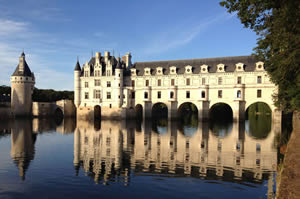
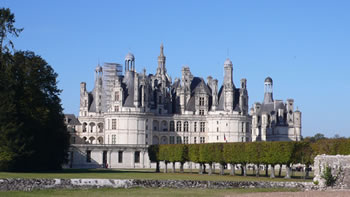
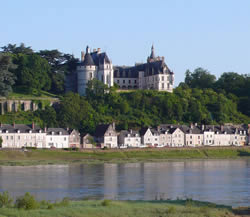
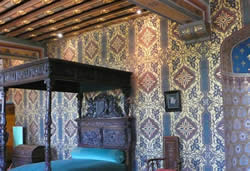
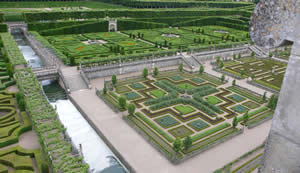
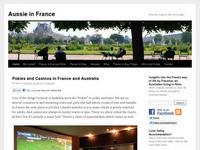 Rosemary Kneipp is an Australian expat living in France. Blog description: I'm an Australian-born translator from Townsville, North Queensland, living in France since 1975. I love sharing my experiences of living in Paris and Blois in the Loire Valley!
Rosemary Kneipp is an Australian expat living in France. Blog description: I'm an Australian-born translator from Townsville, North Queensland, living in France since 1975. I love sharing my experiences of living in Paris and Blois in the Loire Valley!





